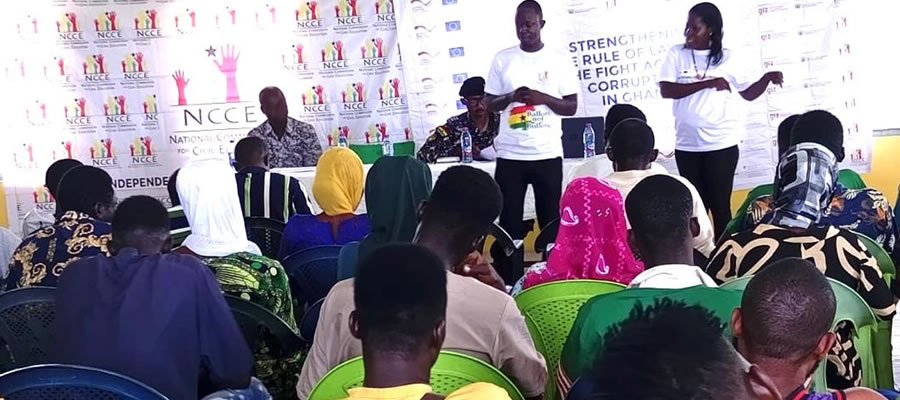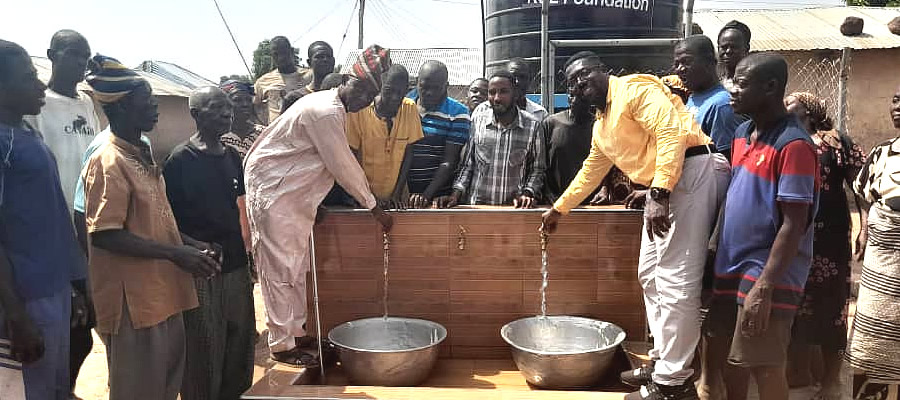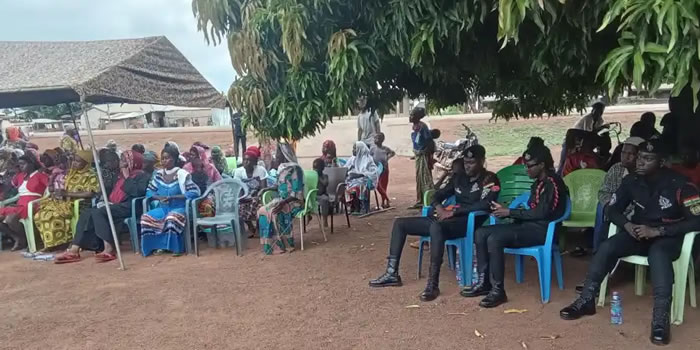

Provision of potable drinking water is a major challenge in the district because of the low water table, making drilling of boreholes difficult. About nineteen (19) boreholes with hand pumps and two mechanized boreholes are found in the district with twenty three (23) number of stand pipes providing portable drinking water in the District.
Water Potable water supply continues to be a challenge in the district. Settlements in both urban and rural areas do not have adequate, reliable and clean water supply throughout the year. Considering the number of rivers spread across the district, it is rather disappointing that only few communities along the river have access to potable drinking water.
In the area of sanitation, 36 communities in the District are Open Defecation Free (ODF). Fumigation exercise conducted in all the public places in the district in the fight against COVID-19. Sensitization exercise in 12 Communities on general sanitation and COVID-19 preventive measures carried out. Eleven (11) refuse evacuation containers were also mounted in strategic locations of the district.
The main modes of solid waste disposal is dumping indiscriminately. More than half (51.8%) of the dwelling units in the district throw their liquid waste on to the street/outside. The Community Led Total Sanitation (CLTS) concept is ongoing in the district. Only few of the communities in the district are Open Deification Free (ODF) and majority of the communities till engaged in Open Defecation.
The water situation in the district is categorized around the following: That is, Rain-water, Surface Water, and Ground Water: The rainfall pattern in North East Gonja is characterized by irregularity and variability in terms of duration and total amount of rainfall, which has been the key limiting factor affecting crop production in the district. The district falls within the sub-basins of the Black and White Volta Rivers. Other rivers and seasonal tributaries form a network with some important valleys such as Fuu and Chambulgu.
The major perennial streams and rivers include the Daka River that flows in the north-south direction into the main Volta.
The Geological unit underlying the North East Gonja district is mainly the Obosum Beds consisting of argillaceous sandstones, arkose, siltones interbedded mudstone, sandy shales and conglomerates. Only about thirty-four (34) boreholes with hand pumps are found in this area, the drilling depth rarely exceed 80m. The yields of successful boreholes ranges from 10l/min to about 1000l/min. Most boreholes with hand pumps have low yields while some of the mechanized boreholes for small towns have high yields. The success rate is among the lowest in the region estimated to be about 35%.
Spatial Distribution of Water Facilities
Finally, Potable water supply continues to be a challenge in the district. Settlements in rural areas do not have adequate, reliable and clean water supply throughout the year. There are 7 number of pipe schemes that are not functional due to technical and financial constrain in order to keep them fixed.
Date Created : 6/5/2024 12:00:00 AM









 facebook
facebook
 twitter
twitter
 Youtube
Youtube
 +233 593 831 280
+233 593 831 280 0800 430 430
0800 430 430 GPS: GE-231-4383
GPS: GE-231-4383 info@ghanadistricts.com
info@ghanadistricts.com Box GP1044, Accra, Ghana
Box GP1044, Accra, Ghana